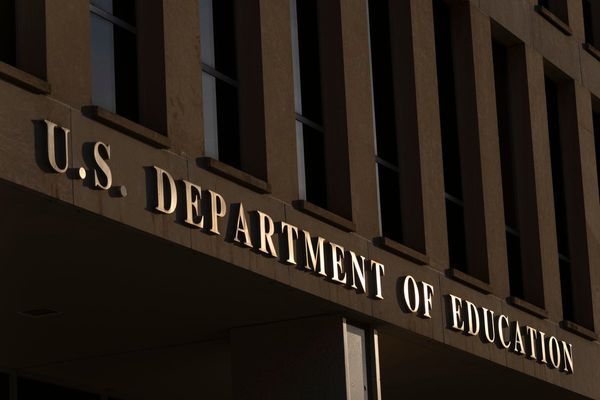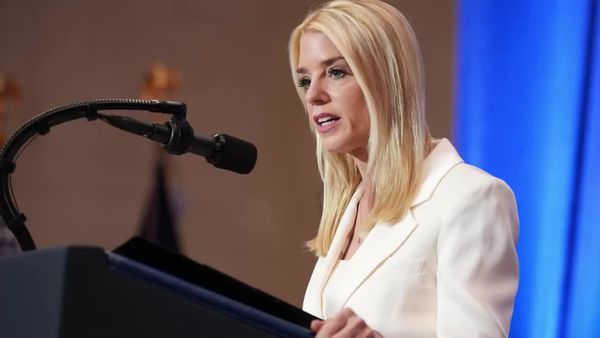The Biden administration and lawmakers are drawing up plans to screen and potentially restrict U.S. investment flowing to China’s tech sector, but the effort is already sparking debate about how far-reaching it should be.
Despite the widespread concern about sharing technology with China, the administration still has to decide whether screening and restrictions should cover only investment in semiconductors, quantum computing and artificial intelligence or include sectors such as pharmaceuticals, critical minerals and others.
“Outbound investment into certain industries or sectors may end up being used against us, especially in those areas where there’s military-civilian fusion of technology,” said Rep. Raja Krishnamoorthi, D-Illinois, the top Democrat on the House Select Committee on the Strategic Competition Between the U.S. and the Chinese Communist Party. “But, again, I think that we need to take a scalpel to this as opposed to a sledgehammer.”
The committee’s work is intended to uncover economic and other ties that enable Beijing to gain an advantage over Washington, Krishnamoorthi said in an interview.
“And no way should we empower the CCP to be able to use technology or money or investments against us,” Krishnamoorthi said. “Certainly, in a security or military sense, and potentially economically, but at the same time we have to be careful about harming our own interests.”
Congress used the fiscal 2023 omnibus spending bill to ask the Treasury and Commerce departments to study how to track U.S. capital flows into tech sectors in China and other countries. The departments told Congress in February that it would cost about $10 million to set up such a program.
The White House says it’s preparing an executive order that would provide details on how a screening program would work.
Rep. Rosa DeLauro, D-Connecticut, the top Democrat on the House Appropriations Committee who led the effort in the last Congress to ask for the departments’ reports, has said she plans to introduce a measure in the 118th Congress that would lay out a structure and scope of screening and restrictions. Legislation would be more durable than an executive order — and harder to achieve.
Michael Wessel, a member of the U.S.-China Economic and Security Review Commission, said experts are still debating how broadly or narrowly the program should be structured and what sectors should be covered. Most reports suggest an executive order will focus on semiconductors, quantum computing and artificial intelligence.
“I think it should be a broader effort,” Wessel said, noting that he was speaking for himself and not for the commission, a bipartisan panel established by Congress in 2000. Investment in pharmaceutical suppliers and critical minerals sourced from China should also be part of the screening, Wessel said.
The scope of the program is still under debate, Wessel said. “I think there will be legislation in both the House and Senate that would buttress what is expected in the executive order,” he said.
The House passed DeLauro’s proposal in the last Congress as part of a broad tech and science bill, but the Senate didn’t act on a similar measure from Sens. Bob Casey, D-Pennsylvania, and John Cornyn, R-Texas.
Mirroring export control mechanisms
Martijn Rasser, managing director of Datenna Inc., a company based in the Netherlands with an office in Washington, said concerns about the breadth of a screening mechanism mirror concerns on export control mechanisms applying to key technologies. Datenna is building a database on China’s industry and technology.
“You have to be able to thread the needle between very real national security concerns and the overall health of the U.S. private sector outbound investments,” Rasser said in an interview.
The U.S. government lacks the capability to “do this kind of analysis, so it’s best to start small, tailored, almost to serve as a proof of concept” before expanding the program, Rasser said.
Even with publicly available information, it’s hard to be precise about how much U.S. funding is going into key tech sectors in China, said Ngor Luong, research analyst at the Center for Security and Emerging Technology at Georgetown University’s Walsh School of Foreign Service.
“We don’t have visibility into the exact amount of U.S. investment into China,” Luong said in an interview. She’s the co-author of a February report that used publicly available information to find that between 2015 and 2021 at least $40.2 billion, or about 37 percent, of the $110 billion in capital raised by Chinese artificial intelligence companies involved U.S. investors.
But the report noted that the data, collected from Crunchbase, a company that tracks startup funding, doesn’t clearly spell out how much money came from U.S. investors specifically and how much from consortia of investors that also included American citizens.
A robust program to stop the flow of material and money to China’s technology sectors would require Congress to give the Commerce Department, for example, more resources and authorities, Rasser said in testimony last week before the U.S.-China Economic and Security Review Commission.
The Commerce Department should be made part of the U.S. intelligence community with an assistant secretary of intelligence, whose office would study the long-term economic effects of export controls, he told the commission.
Emily Kilcrease, senior fellow at the Center for a New American Security, told the commission an outbound investment screening program also should be designed in collaboration with allies and partners.
“A disciplined design can also avoid another potential unintended consequence, which is that other countries mimic a broad U.S. mechanism and the proliferation of such mechanisms create new barriers to U.S. investors abroad,” Kilcrease said.
“The U.S. FDI position worldwide is $6.5 trillion, of which only $118 billion is in China,” Kilcrease said, referring to foreign direct investment for the year 2022. “U.S. outbound investment tools should reflect these basic facts and be designed to avoid disrupting the large amount of FDI flows that do not involve China.”







